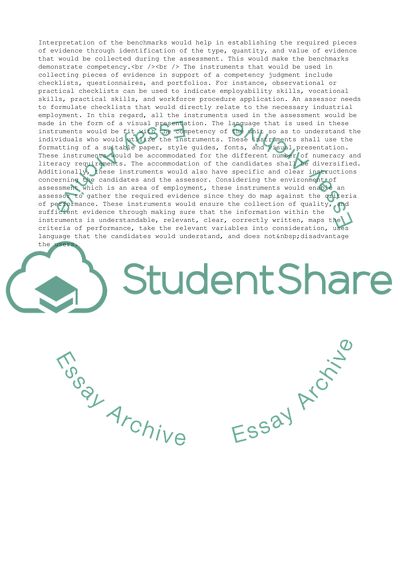Cite this document
(Develop and Design Assessment Tools Assignment Example | Topics and Well Written Essays - 3552 words, n.d.)
Develop and Design Assessment Tools Assignment Example | Topics and Well Written Essays - 3552 words. Retrieved from https://studentshare.org/management/1779162-training-and-assessment-taeass502b
Develop and Design Assessment Tools Assignment Example | Topics and Well Written Essays - 3552 words. Retrieved from https://studentshare.org/management/1779162-training-and-assessment-taeass502b
(Develop and Design Assessment Tools Assignment Example | Topics and Well Written Essays - 3552 Words)
Develop and Design Assessment Tools Assignment Example | Topics and Well Written Essays - 3552 Words. https://studentshare.org/management/1779162-training-and-assessment-taeass502b.
Develop and Design Assessment Tools Assignment Example | Topics and Well Written Essays - 3552 Words. https://studentshare.org/management/1779162-training-and-assessment-taeass502b.
“Develop and Design Assessment Tools Assignment Example | Topics and Well Written Essays - 3552 Words”. https://studentshare.org/management/1779162-training-and-assessment-taeass502b.


